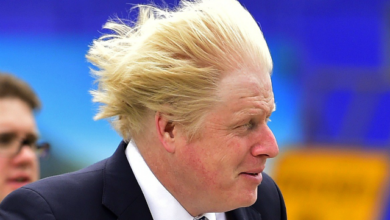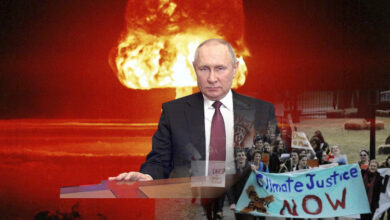A Review of “Feasibility of the Olympic marathon under climatic and socioeconomic change” • Watts Up With That?

In another of the never ending series of climate alarmism science publishing, a paper titled “Feasibility of the Olympic marathon under climatic and socioeconomic change” by Takahiro Oyama et al. has emerged, attempting to intertwine the realms of sports and climate change. The paper, shrouded in the guise of scientific inquiry, seems more like an exercise in creative speculation, leveraging the universal appeal of the Olympics to propagate the narrative of climate catastrophe.
Abstract
There are concerns about the impact of climate change on Olympic Games, especially endurance events, such as marathons. In recent competitions, many marathon runners dropped out of their races due to extreme heat, and it is expected that more areas will be unable to host the Games due to climate change. Here, we show the feasibility of the Olympic marathon considering the variations in climate factors, socioeconomic conditions, and adaptation measures. The number of current possible host cities will decline by up to 27% worldwide by the late twenty-first century. Dozens of emerging cities, especially in Asia, will not be capable of hosting the marathon under the highest emission scenario. Moving the marathon from August to October and holding the Games in multiple cities in the country are effective measures, and they should be considered if we are to maintain the regional diversity of the Games.
The authors embark on a mission to assess the feasibility of hosting Olympic marathons under the alleged impending doom of climatic and socioeconomic changes. They employ a concoction of models, references, and what seems like an arduous effort in biased reasoning to arrive at conclusions that seem as uncertain as predicting the exact temperature at sunset in my home town fifty years from now.
Diving into the paper, one is greeted with a barrage of references, models, and arbitrary standards, which are wielded with the precision of a blunt instrument. The paper seems to be a labyrinth of complexities, perhaps designed to obfuscate rather than elucidate. The use of multiple models, references to various socioeconomic pathways, and a sprinkle of climate change jargon gives the paper a veneer of scientific rigor.
Results
Climate change impacts under current socioeconomic conditions
First, to clarify the impact of climate change alone, we evaluated the number of cities that could host the Olympic marathon in August during the late twenty-first century (2080–2099) under the socioeconomic conditions in 2020, changing only the climatic conditions according to the four RCPs. A total of 70 cities in 25 countries were selected based on (1) socioeconomic conditions as of 2010 (an urban population of 2.5 million or more, a national GDP of 300 billion dollars or more (purchasing power parity (PPP), Int’l $ 2005) as of 2010 and a GDP growth rate above 0% as of 2010–2015); (2) an elevation of less than 1,600 m11; and (3) the availability of meteorological data for WBGT correction using the method of Takakura et al.20. See the Methods section for the rationale behind the selection criteria above.
As evaluation criteria for cities, the WBGT levels were set as follows based on the four alert levels (low, moderate, high, and extreme) in the IIRM Medical Care manual16.
WBGT level 1 (good): There is a greater than 90% probability that the WBGT will fall below 18°C for at least three consecutive hours between 7:00 and 21:00 in August. WBGT level 1 corresponds to a low alert level and “good conditions” in the IIRM’s manual.
WBGT level 2 (caution): Level 1 does not apply, and there is a greater than 90% probability that the WBGT will fall below 22°C for at least 3 consecutive hours between 7:00 and 21:00 in August. WBGT level 2 corresponds to a moderate alert level and “less than ideal conditions” in the IIRM’s manual.
WBGT level 3 (warning): Levels 1 and 2 do not apply, and there is a greater than 90% probability that the WBGT will fall below 28°C for at least 3 consecutive hours between 7:00 and 21:00 in August. WBGT level 3 corresponds to a high alert level and “potentially dangerous conditions” in the IIRM’s manual.
WBGT level 4 (cancel): Levels 1, 2, and 3 do not apply. WBGT level 4 corresponds to an extreme alert level and “event cancelled / extreme and dangerous conditions” in the IIRM’s manual.
The paper’s reliance on the WBGT as an indicator of feasibility could be a convenient choice, allowing for a playground of data manipulation and selective interpretation. The authors’ journey through a forest of GCMs (General Circulation Models) and socioeconomic considerations seems like an odyssey of uncertainty, where the destination appears as elusive as a mirage.
“Feasibility of the Olympic marathon under climatic and socioeconomic change” seems like a marathon of speculative exercises, running through lanes of uncertainty, jumping hurdles of data manipulation, and ultimately crossing a finish line of climate alarmism. It serves as a reminder that in the arena of climate science, the race for truth is often overshadowed by the spectacle of alarmist narratives and the fanfare of misguided intentions.
You can wade through the Open Access paper here. Feasibility of the Olympic marathon under climatic and socioeconomic change




